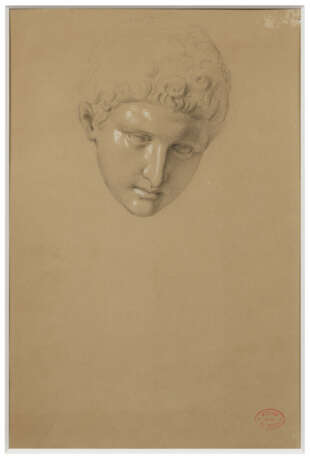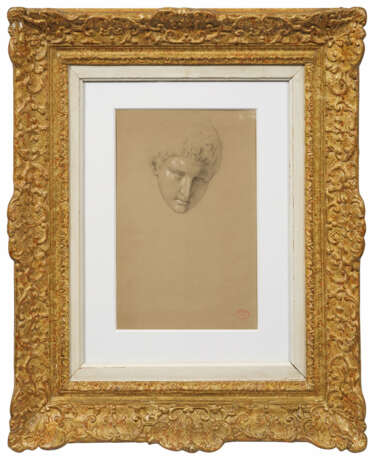ID 1465160
Lot 1831 | Edgar Degas (1834 Paris - 1917 ebenda) attr.;
Estimate value
€ 2 400 – 4 800
Studie eines antiken Kopfes
Die Zeichnung zählt zu Degas‘ frühen Antikenstudien, wohl um 1856-1858. Die Vorlage für Degas war die berühmte Marmorstatue des sog. "Kapitolinischen Antinous" (130 n. Chr.), die Aktskulptur eines jungen Mannes, die in der Villa Kaiser Hadrians in Tivoli gefunden wurde (seit 1733 in den Kapitolinischen Museen in Rom). Degas nahm aus der großen Skulptur nur den Kopf für seine Darstellung, bei der er die feinen Gesichtszüge mit zeichnerischen Mitteln und subtilen Höhungen aufs Feinste modulierte und gleichsam plastisch herausarbeitete. 1855 lernte Degas, der später als Impressionist bekannt wurde, Jean-Auguste-Dominique Ingres kennen, den er sehr verehrte und dessen Rat er nie vergaß: "Zeichne Linien, junger Mann, und noch mehr Linien, sowohl nach dem Leben als auch nach der Erinnerung, und du wirst ein guter Künstler." Im selben Jahr wurde Degas an der École des Beaux-Arts aufgenommen, wo er 1855/56 Zeichnen bei Louis Lamothe studierte, einem Ingres-Schüler, unter dessen Anleitung er aufblühte. Zugleich zeichnete er in den Pariser Museen nach Antiken und Gemälden alter Meister. Dieses Studien konnte er autodidaktisch weiterführen, als er 1856 zu der für bildende Künstler damals obligatorischen Studienreise nach Italien aufbrach, er besuchte Neapel und verbrachte rund eineinhalb Jahre in Rom. Dort zeichnete und malte er auch nach Künstlern der Renaissance, entgegen der üblichen Praxis wählte er jedoch meist ein Detail aus einer großen Komposition aus, das seine Aufmerksamkeit erregte. Im Juli 1858 setzte er seine Reise fort nach Florenz, erst im April 1859 kehrte Degas nach Paris zurück. Bleistift mit Weißhöhungen/Papier. R. u. ovaler Nachlassstempel in Rot "ATELIER ED. DEGAS" (Lugt 657). Gebräunt, rechte obere Ecke mit leichten Läsuren und Wurmstich. 31,5 cm x 20,5 cm (Passepartout). Rahmen.
Provenienz (laut Stempel und Informationen des Einlieferers): Nachlass Edgar Degas; René de Gas (Paris), Odette de Gas and ihr Mann Rolland Wilhelm gen. Roland Nepveu-Degas (Paris); deutsche Privatsammlung.
Attributed to Edgar Degas (1834 - 1917). Pencil and whitening on paper. Red oval estate stamp "ATELIER ED. DEGAS" (Lugt 657). Slight light toning, minor flaws an worm hole to the corner upper right.
| Address of auction |
Kunstauktionshaus Schloss Ahlden GmbH Große Str. 1 29691 Ahlden(Aller) Germany | ||||||||||||||
|---|---|---|---|---|---|---|---|---|---|---|---|---|---|---|---|
| Preview | |||||||||||||||
| Phone | +49 5164 80100 | ||||||||||||||
| Buyer Premium | 25.0 | ||||||||||||||
| Conditions of purchase | Conditions of purchase | ||||||||||||||
| Business hours | Business hours
|




